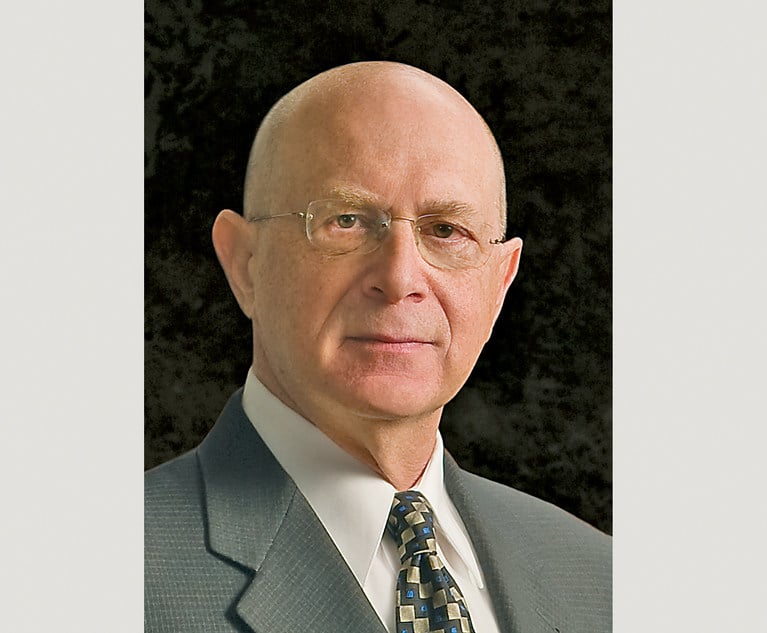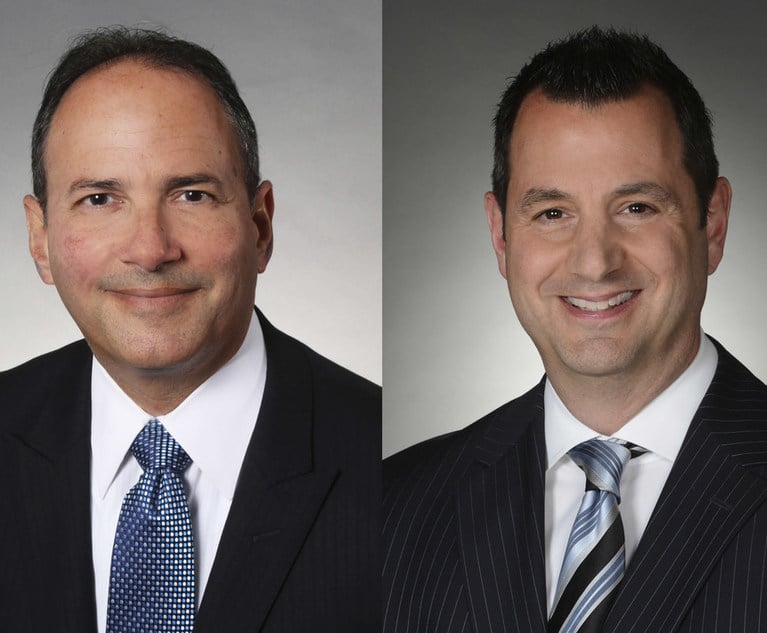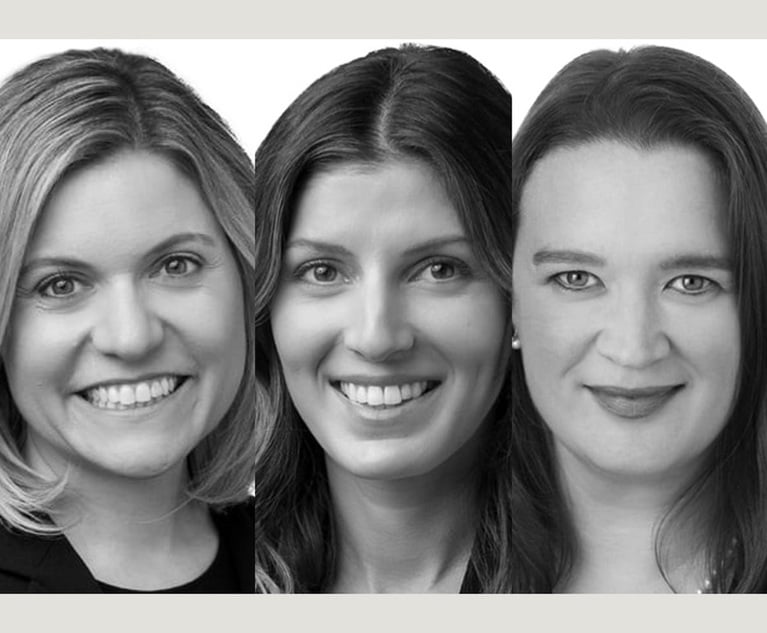 Larry Coben, shareholder at Anapol Weiss. Courtesy photo
Larry Coben, shareholder at Anapol Weiss. Courtesy photo The Use and Admissibility of Product Testing at Trial
The slope can be slippery between product testing to prove how an incident occurred and testing to illustrate performance of a product or relevant scientific principles. It requires very careful analysis of what testing will be helpful to illustrate relevant principles.
January 23, 2023 at 11:53 AM
7 minute read
In the trial of products liability cases, representing catastrophically injured plaintiffs, counsel often consider the need to test a product and call upon expert witnesses to testify at trial to the safety performance or the inadequacy of a particular product as shown in testing. Long before a party considers running product tests, the legal evidentiary criteria for admissibility must be studied to assure counsel that these often extraordinarily expensive analyses will come into evidence. The admissibility of product tests is often dependent upon the purpose for which the results are being offered at trial. The following is a short list of the factual and legal predicate often proffered for the admissibility of such testing: to reconstruct the injury-producing injury; to illustrate or demonstrate scientific principles relevant to an understanding of aspects of the accident without reconstructing it; to dynamically study the performance of aspects of the product to gauge its safety; or to dynamically study the performance of an aspect of an alternatively designed product to gauge its feasibility or comparative safety. Courts have developed various criteria for allowing or disallowing product testing based upon which of these bases is relied upon.
In Harsh v. Petroll, 840 A.2d 404, 419 (Pa. Cmwlth. Ct. 2003), the appellate court affirmed the exclusion at trial of litigation-sponsored crash testing because these tests were not based on the very same facts of the crash events. The court excluded these tests because they would create jury confusion and prejudice the opposing party. The court noted and other appellate cases employ a distinction—allowing for admissibility—when the tests are intended to demonstrate general principles or other issues not attempting to recreate a specific set of facts in dispute in the case. In Jackson v. Spagnola, 503 A.2d 944, 946-947, n.1 (Pa. Super. 1986), the court admitted crash-test films that were illustrative of the expert's testimony and not meant to recreate the accident.
This content has been archived. It is available through our partners, LexisNexis® and Bloomberg Law.
To view this content, please continue to their sites.
Not a Lexis Subscriber?
Subscribe Now
Not a Bloomberg Law Subscriber?
Subscribe Now
NOT FOR REPRINT
© 2025 ALM Global, LLC, All Rights Reserved. Request academic re-use from www.copyright.com. All other uses, submit a request to [email protected]. For more information visit Asset & Logo Licensing.
You Might Like
View All
Saul Ewing Loses Two Partners to Fox Rothschild, Marking Four Fla. Partner Exits in Last 13 Months
3 minute read
TikTok Opts Not to Take Section 230 Immunity Fight to U.S. Supreme Court
4 minute read
Lackawanna County Lawyer Fails to Shake Legal Mal Claims Over Sex With Client
3 minute read
Law Firms Mentioned
Trending Stories
- 1The M&A Partners Who Drove the Most Business as Deal Leads in 2024
- 2Judge Finds Trump Administration Violated Order Blocking Funding Freeze
- 3CFPB Labor Union Files Twin Lawsuits Seeking to Prevent Agency's Closure
- 4Crypto Crime Down, Hacks Up: Lawyers Warned of 2025 Security Shake-Up
- 5Atlanta Calling: National Law Firms Flock to a ‘Hotbed for Talented Lawyers’
Who Got The Work
J. Brugh Lower of Gibbons has entered an appearance for industrial equipment supplier Devco Corporation in a pending trademark infringement lawsuit. The suit, accusing the defendant of selling knock-off Graco products, was filed Dec. 18 in New Jersey District Court by Rivkin Radler on behalf of Graco Inc. and Graco Minnesota. The case, assigned to U.S. District Judge Zahid N. Quraishi, is 3:24-cv-11294, Graco Inc. et al v. Devco Corporation.
Who Got The Work
Rebecca Maller-Stein and Kent A. Yalowitz of Arnold & Porter Kaye Scholer have entered their appearances for Hanaco Venture Capital and its executives, Lior Prosor and David Frankel, in a pending securities lawsuit. The action, filed on Dec. 24 in New York Southern District Court by Zell, Aron & Co. on behalf of Goldeneye Advisors, accuses the defendants of negligently and fraudulently managing the plaintiff's $1 million investment. The case, assigned to U.S. District Judge Vernon S. Broderick, is 1:24-cv-09918, Goldeneye Advisors, LLC v. Hanaco Venture Capital, Ltd. et al.
Who Got The Work
Attorneys from A&O Shearman has stepped in as defense counsel for Toronto-Dominion Bank and other defendants in a pending securities class action. The suit, filed Dec. 11 in New York Southern District Court by Bleichmar Fonti & Auld, accuses the defendants of concealing the bank's 'pervasive' deficiencies in regards to its compliance with the Bank Secrecy Act and the quality of its anti-money laundering controls. The case, assigned to U.S. District Judge Arun Subramanian, is 1:24-cv-09445, Gonzalez v. The Toronto-Dominion Bank et al.
Who Got The Work
Crown Castle International, a Pennsylvania company providing shared communications infrastructure, has turned to Luke D. Wolf of Gordon Rees Scully Mansukhani to fend off a pending breach-of-contract lawsuit. The court action, filed Nov. 25 in Michigan Eastern District Court by Hooper Hathaway PC on behalf of The Town Residences LLC, accuses Crown Castle of failing to transfer approximately $30,000 in utility payments from T-Mobile in breach of a roof-top lease and assignment agreement. The case, assigned to U.S. District Judge Susan K. Declercq, is 2:24-cv-13131, The Town Residences LLC v. T-Mobile US, Inc. et al.
Who Got The Work
Wilfred P. Coronato and Daniel M. Schwartz of McCarter & English have stepped in as defense counsel to Electrolux Home Products Inc. in a pending product liability lawsuit. The court action, filed Nov. 26 in New York Eastern District Court by Poulos Lopiccolo PC and Nagel Rice LLP on behalf of David Stern, alleges that the defendant's refrigerators’ drawers and shelving repeatedly break and fall apart within months after purchase. The case, assigned to U.S. District Judge Joan M. Azrack, is 2:24-cv-08204, Stern v. Electrolux Home Products, Inc.
Featured Firms
Law Offices of Gary Martin Hays & Associates, P.C.
(470) 294-1674
Law Offices of Mark E. Salomone
(857) 444-6468
Smith & Hassler
(713) 739-1250





